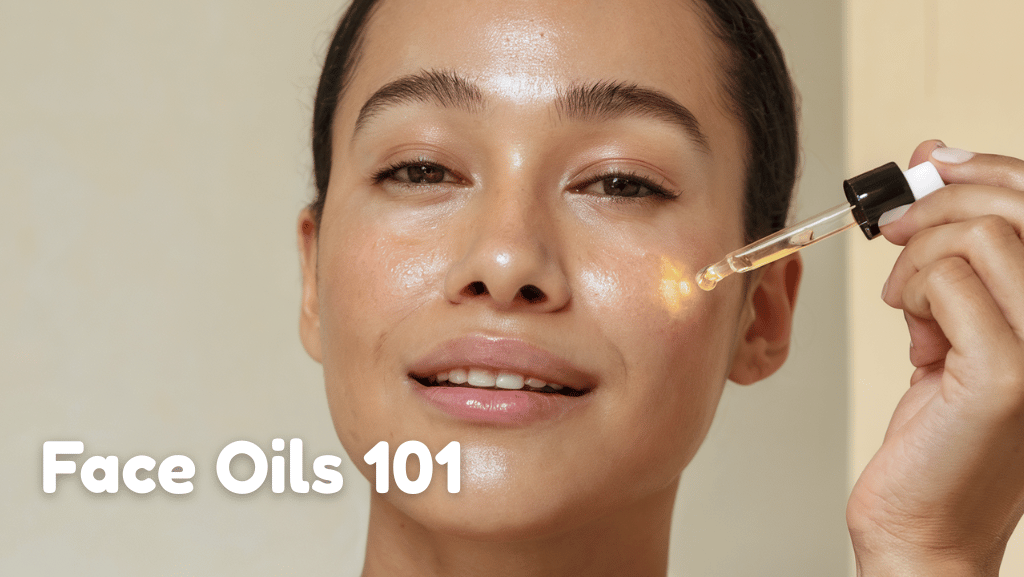If you’ve ever wondered whether adding a face oil is the missing piece in your skincare routine, you’re not alone. For those interested in facial oil serum options, understanding how to choose and apply them can make all the difference in your results. In this guide, we’ll break down the real science behind facial oils, debunk common myths, and offer practical tips for selecting and using oils based on your unique skin type. Whether you’re worried about breakouts, dryness, or just want a natural glow, you’ll learn everything you need to confidently incorporate face oils into your daily routine.
Understanding Face Oils: Benefits Beyond Hydration
Face oils do much more than simply add moisture—they play a pivotal role in supporting your skin’s natural barrier and defending against daily stressors. The secret is in their composition: plant-derived fatty acids closely mimic the skin’s own sebum, which helps normalize oil production whether your skin is dry or oily.
- Balance Oil Production: By providing skin with the right kinds of oils, you can actually reduce excess sebum in oily skin and replenish lost moisture in drier types.
- Antioxidant Protection: Many plant oils—like argan, rosehip, and sea buckthorn—are loaded with antioxidants that neutralize free radicals, shielding your skin from environmental damage.
- Seal in Benefits: Unlike water-based serums, oils form a breathable barrier that locks in hydration and maximizes the efficacy of other products in your routine.
For example, people living in windy or dry climates often find that adding a face oil prevents the tight, uncomfortable feeling that comes from moisture loss. Even those with combination skin can use a few drops on drier patches for targeted relief. The key is knowing which oil matches your needs—a topic we’ll explore next.
Choosing the Right Face Oil for Your Skin Type
Finding the best face oil starts with understanding your skin’s unique needs. When selecting a facial oil serum, look for products with transparent ingredient lists that clearly indicate the botanical sources and extraction methods used. The right oil can help restore your barrier, balance oil production, and even soothe sensitivity—but the wrong one may trigger breakouts or irritation. Let’s break down what matters most.
- Non-Comedogenic Ratings: Oils rated 2 or lower are less likely to clog pores, making them ideal for acne-prone or oily skin.
- Molecular Weight: Lightweight oils like squalane and jojoba absorb quickly and penetrate deeper, while richer oils like argan and avocado sit more on the surface, providing extra protection.
- Fatty Acid Profile: Oils high in linoleic acid (like rosehip) are perfect for acne-prone skin, while those rich in oleic acid (like olive or avocado) are better for dryness.
Comparison of Face Oils by Skin Type
| Skin Type | Best Oils | Key Benefits |
| Dry | Argan, Rosehip | Deep hydration, barrier repair |
| Oily/Acne-Prone | Jojoba, Squalane | Balance sebum, non-comedogenic |
| Sensitive | Chamomile, Calendula | Calm inflammation, reduce redness |
| Aging | Sea Buckthorn, Pomegranate | Antioxidant protection, support elasticity |
If you’re new to face oils, start with a patch test and introduce just one product at a time. This approach allows your skin to adjust and makes it easier to spot any sensitivities. Remember, the source and quality of the oil matter just as much as your skin type—so always check for cold-pressed, unrefined oils for the best results.
Application Techniques: When and How to Use Face Oils
How you apply your face oil can be just as important as which one you choose. The right technique helps your skin soak up every drop of goodness, while the wrong order can actually block absorption or make your skin feel greasy. Let’s take the guesswork out of your routine.
- Order of Application: Lightweight oils can be used before your moisturizer or mixed in, while heavier oils are best applied last to seal everything in.
- Warm and Press: Place 3-4 drops in your palms, rub them together to warm, then gently press the oil onto your face—this method avoids tugging and ensures even coverage.
- Timing: In the morning, oils like squalane can shield against pollutants. At night, richer oils like rosehip support overnight repair and hydration.
For everyday use, try adding a couple of drops of facial oil to your moisturizer for a hydration boost, or use it as the final step to lock in all your products. If you have combination skin, focus application on dry or flaky areas. And don’t forget your neck and décolletage—these areas benefit from oil just as much as your face.
Common Myths About Face Oils Debunked
Face oils have a reputation—sometimes good, sometimes not. Let’s set the record straight with evidence-based facts so you can feel confident in your choices.
- Myth: Face oils clog pores.
Fact: Non-comedogenic oils (like squalane and jojoba) are unlikely to cause breakouts and can actually help balance oily or acne-prone skin. - Myth: Face oils are only for winter.
Fact: With the right formulation, you can use face oils all year—swap heavier oils for lighter ones in the summer to keep skin balanced and comfortable. - Myth: Expensive oils are always better.
Fact: The effectiveness of a face oil depends on its ingredients and how it’s processed, not the price tag. Look for cold-pressed, unrefined oils instead of fancy packaging.
If you’ve been hesitant to try a face oil, start slow and pay attention to how your skin responds. With the right selection and technique, face oils can become a cornerstone of your skincare routine, delivering hydration, protection, and a healthy glow—no matter your skin type.




